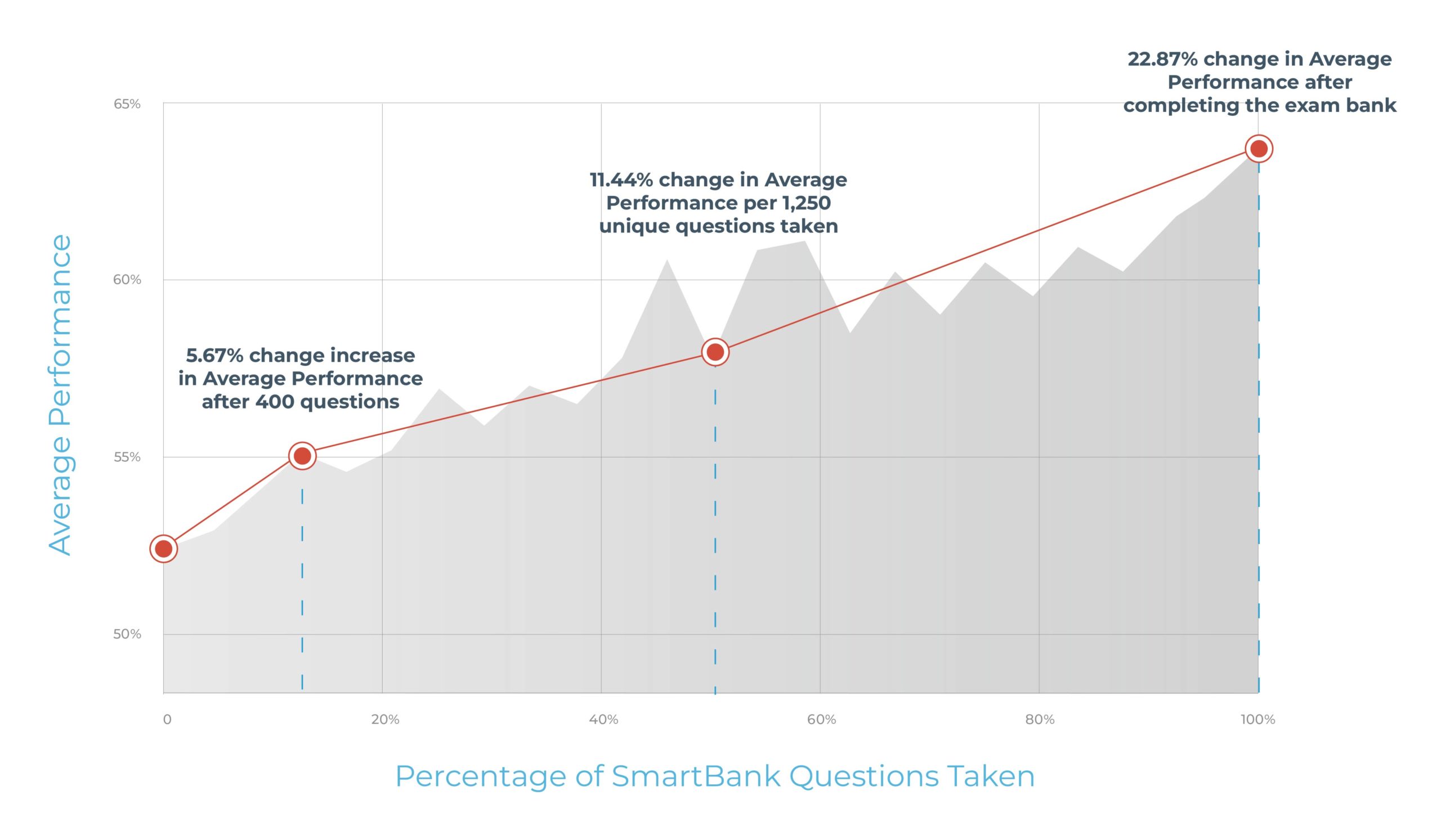COMBANK’s 3-Phase COMLEX Level 1 Study Plan
Testing was once thought to be a means of assessment only. However, this thinking has changed as more and more literature has come out pertaining to the significance of testing on the entire process of learning. This is an important concept for you to grasp when preparing your COMLEX study plan for Level 1. Deliberate practice through multiple-choice type questions has been shown to foster both improvement and expertise.
Most osteopathic medical schools provide some level of guidance for students undergoing COMLEX preparation.
However, self-study and self-guidance are also needed when preparing for any standardized test. The tremendous time-demands implicit in medical education force individuals to make choices on where to focus their primary energy and concentration when preparing for high stakes exams.
We encourage you to take a highly interactive approach to your own board preparation. Regardless of the particular resources you choose to build into your study plan, your own investment and accountability in executing the plan itself will pay great dividends.
A Study Plan Based in Data
Over the years, TrueLearn has gained lots of insight into how students improve as they take practice questions within COMBANK. We looked at data collected from 3,900 osteopathic students who used COMBANK in preparation for their COMLEX Level 1 examinations and made some insightful discoveries. This analysis shows a ‘ramp-up’ period where average performance increases very quickly. The average score of a user’s first 10 questions is 56 percent.
By question numbers 400-410, the average is already up to 61 percent, with a fairly linear increase in between. This rapid increase over the first 400 questions is likely due to students’ first exposure to COMLEX-style questions. After the first 400 question acclimation period, performance settles into a steady improvement path for the remainder of the Q-bank.

The 3-Phase COMLEX Study Plan
There are many winning strategies when it comes to board preparation, most of which depends on learning style and performance goals. There are multiple winning strategies, each dependent on aspects unique to the individual learner.
At TrueLearn, we recommend a three-phase approach to incorporating test items into the preparatory process, which is outlined in the figure below.The proposed methodology below incorporates strategic planning that commences approximately six months prior to the scheduled examination date (although the timeframe can be adjusted accordingly).
Phase 1: Practice Questions
We recommend only taking practice questions during the first month of study.
The first month of preparation will likely coincide with a busy course schedule. It is during this period where the full study plan should be developed. Developing an effective strategy and game plan is a critical part of Phase 1.
Board review books should be identified and purchased, study resources should be obtained, and objectives should be stated. The most critical part of Phase 1 is learning to integrate board preparation into your coursework.
We recommend taking exams in a live and timed environment at a frequency of approximately three times per week. Each exam should contain approximately 25 total questions and exams should be created to cover a randomized group of categories.
By the time you reach the second month of the preparatory period, you should have a game plan set in place and be ready to execute. In month two, you will continue testing in the same format as month one. However, in addition to testing you should now begin to incorporate additional resources in your board arsenal.
Following Phase 1 of the preparatory period, we recommend doing a self-assessment of your approach. This should include documentation of your overall percentage within COMBANK, in addition to a snapshot of your performance breakdown. By your Phase 1 Assessment, you should have taken a total of between 500-600 total test items in a “timed” and “randomized” format.
Phase 2: Ramp Up Study Efforts
By the start of Phase 2, you should now have a good idea of individualized study methods that are most/least effective for you. At this point, your classroom work and your board study should be fully integrated and refined. You will find yourself pinpointing important board-relevant concepts as you go through material in the classroom, while spending less time on “minutia.”
It is your investment in your own study program (regardless of the resources you choose) that will have the greatest impact on your achievement. We suggest you start to increase the amount of practice questions you take each week.
As was the case in Phase 1, it’s crucial you assess yourself at the end of Phase 2. At this point you should be seeing regular and steady improvement of your scores.
Phase 3: Focus on Weaker Areas
Phase 3 is the most critical phase in the preparatory period. It marks the final period of board preparation leading up to test day. By this time you should have a clear focus and have made significant progress in your strategic plan.
Because the COMLEX examination will be given in timed 50-item blocks, we recommend increasing the total number of practice items to 50 questions for each test. Being able to think clearly at the beginning and end of each section is very important. Just like a marathon runner who is training for an upcoming race, it is important to build stamina.
During Phase 3, we recommend shifting studying to a subject-specific approach, beginning with your weakest subject and focusing only on material within that area.
For example, if you scored poorly in the physical sciences portion of the MCAT, received a C+ in biochemistry and continue to do poorly in this subject within COMBANK, you would want to begin your studying with biochemistry.
You will note that the Phase 3 Assessment is scheduled earlier in the sixth month, prior to taking either the COMLEX. This is done purposefully and for good reason. If by chance you are not ready FOR ANY REASON to sit for the actual boards, we advise you postpone the examination by a minimum of three weeks.
Incorporating OMM Into Your COMLEX Study Plan
We recommend you also incorporate OMM into your systems-based study throughout your preparation period (with the exception of your subject review) to ensure you have a thorough understanding of how osteopathic principles apply to all areas of the exam.
To further ensure you score highly in this area, we suggest you spend a great deal of dedicated time solidifying your OMM knowledge leading up to your exam.
Begin Phase 1 Now!
We cannot emphasize enough how important it is to learn how to incorporate boards study into your coursework in the months leading up to your COMLEX exam date. Whether you are in a lecture-based or problem-based learning pathway, it is critical that you begin the integration of board study with your classroom work as early as possible.
Login to your account or subscribe to COMBANK powered by TrueLearn to get started today.
![[On-Demand Webinar] COMLEX Level 2 PE Overview](https://truelearn.com/wp-content/uploads/2020/11/Featured-Image_Webinar.png)
